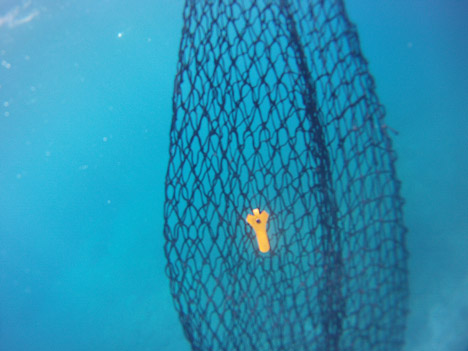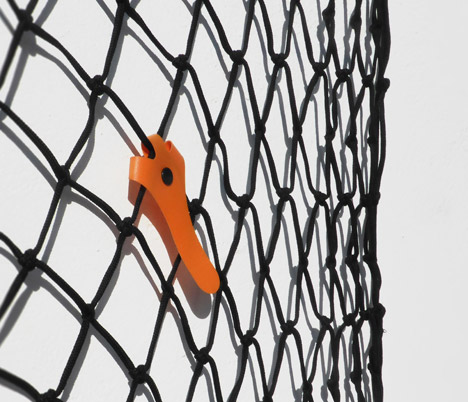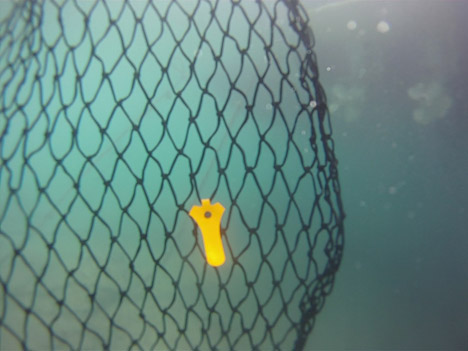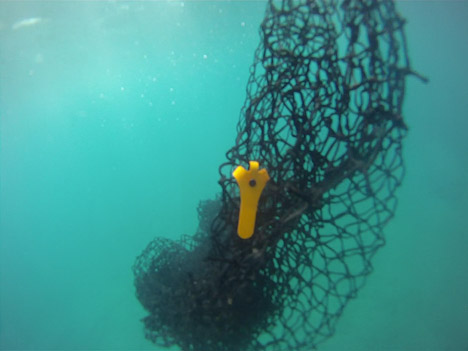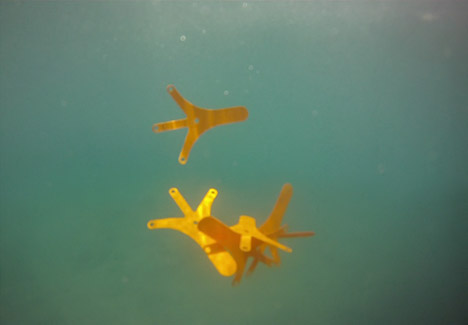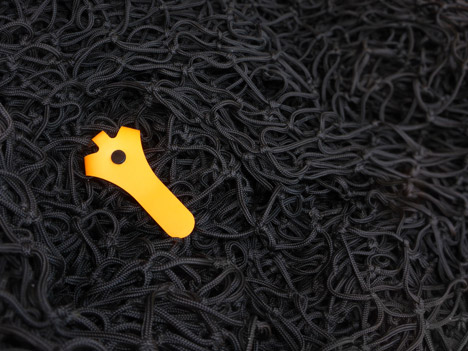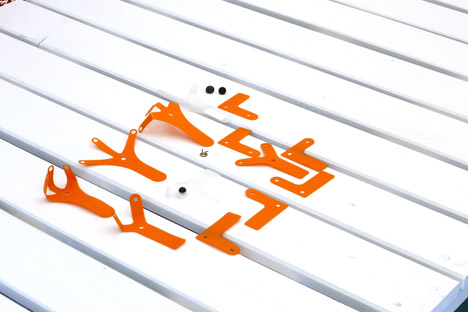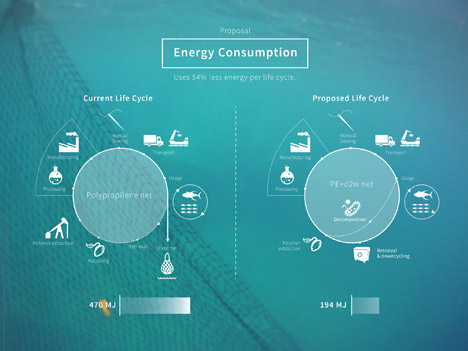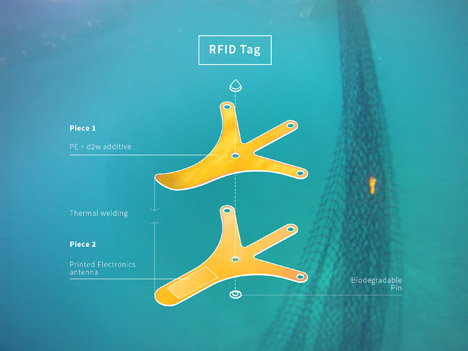Article re-posted from DeZeen Magazine November 16, 2014 (Article by: Alejandro Plasencia | Photos by: Alejandro Plasencia) – Please click HERE for original article.
Engineering student Alejandro Plasencia has created biodegradable fishing nets and tracking tags for fishermen to help stop aquatic mammals getting trapped in lost trawling equipment.
Above: Alejandro Plasencia’s Remora system includes a biodegradable net, radio frequency identification (RFID) tags, an RFID reader and an app.
The elements could combine to help fishermen find and repair damaged nets instead of abandoning them to become “ghost nets” and breaking down into “plastic soup”.
Above: Abandoned fishing nets that remain in the sea continue catching fish and trapping marine mammals, such as whales and dolphins, before breaking down into millions of tiny plastic pieces.
Above: The plastic releases toxins and is consumed mistakenly as food by all kinds of marine organisms right down to microscopic zooplankton.
Plasencia’s solution proposes using his four elements either in parts or together to help solve these environmental issues.
Above: In the first instance, yellow and orange plastic tags embedded with RFID chips could be attached to existing nets. The RFID reader combined with the app would then enable fishermen to track, retrieve and repair the nets more efficiently, or declare them as lost and notify NGOs like Healthy Seas so they can recover them.
Above: “We looking for a very simple, cheap, small unobtrusive piece of technology which could enter the system and make a huge difference,” Plasencia told Dezeen.
Above: “We were inspired by symbiotic relationships in nature, like the remora fish that attaches to sharks’ skin and keeps it clean by eating parasites, feces and leftovers.”
As a second phase, the old nets could be replaced with the Remora net, which contains an additive called d2w in the thread’s polymer.
Above: This would help to degrade the net in an environmentally friendly way at the end of its life cycle, meaning that if it couldn’t be recovered it would break down instead of contributing to the plastic soup.
“The ghost net and plastic soup phenomena threaten the way of life for many populations, so it’s a problem we were very interested in tackling,” said the designer.
Above: “The polymer is threaded and then knitted into meshes with different densities, in factories in the north of Spain. These assorted pieces of net are transported and assembled in facilities close to the harbours where the fishing boats make their technical stops. It is a very artisanal process. The pieces are sewn together with huge plastic needles into the nets’ purse form.”
Above: Plasencia predicted that the creation and use of the his nets would use 54 per cent less energy than the current designs. “We wanted to develop a project for the fishing industry which turned sustainability into a driver of profit,” he said.
Above: Remora was shortlisted for this year’s James Dyson Foundation Award and was the competition’s national winner for Spain.

